How to Create a Winning SEO Strategy in 2024 and Dominate the SERPs
In the ever-shifting world of digital marketing, staying ahead isn’t just a choice—it’s a necessity. As we step into 2024, the world of Search Engine Optimization (SEO) is undergoing a transformative phase, bringing forth challenges and opportunities and creating the need for a robust SEO strategy for businesses aiming to stand out online.
The Need For an Effective and Robust SEO Strategy
A robust SEO strategy goes beyond ranking high on search results; it’s about connecting with your target audience, building credibility, and fostering sustainable business growth. Whether you’re a seasoned marketer or a business owner navigating the digital realm, understanding the significance of a well-crafted SEO strategy is paramount.
The Evolving State of SEO in 2024
SEO is a dynamic field where yesterday’s strategies might not cut it tomorrow. With evolving algorithms, changing user behaviors, and the emergence of new technologies, the SEO landscape is in constant flux.
That’s where we come in. To help you better understand the intricacies of SEO in 2024 we have created this guide that will shed light on everything from the latest trends, and technologies, to best practices for creating a winning SEO strategy for your business.
On that note, without any further ado, let’s begin our journey through the nuances of SEO strategy in 2024, where we’ll unravel strategies that go beyond keywords and meta tags, delving into the very core of what makes your online presence thrive.
1. Understanding the SEO Landscape in 2024
1.1 The Current State of Search Engines
The search engine landscape is constantly evolving. To stay ahead of the curve and ensure your SEO efforts are effective, it’s crucial to have a firm grasp of the current state of search engines.
Overview of Major Search Engines and Their Algorithms
Google:
Google remains the dominant search engine, holding over 90% of the global market share. Its algorithm, PageRank, is the foundation of its search results, ranking web pages based on the number and quality of backlinks they receive.
However, Google’s algorithm is constantly evolving, incorporating hundreds of factors to determine relevance and quality.
Bing:
Bing, the second-largest search engine, uses a combination of human-curated data and algorithms, including RankDex, to deliver search results. It has been gaining traction in recent years, particularly in certain regions like the United States and Germany.
Other:
Other notable search engines include Yahoo!, DuckDuckGo, and Ecosia. These engines offer alternative approaches to search, emphasizing privacy protection, unbiased results, and environmental sustainability, respectively.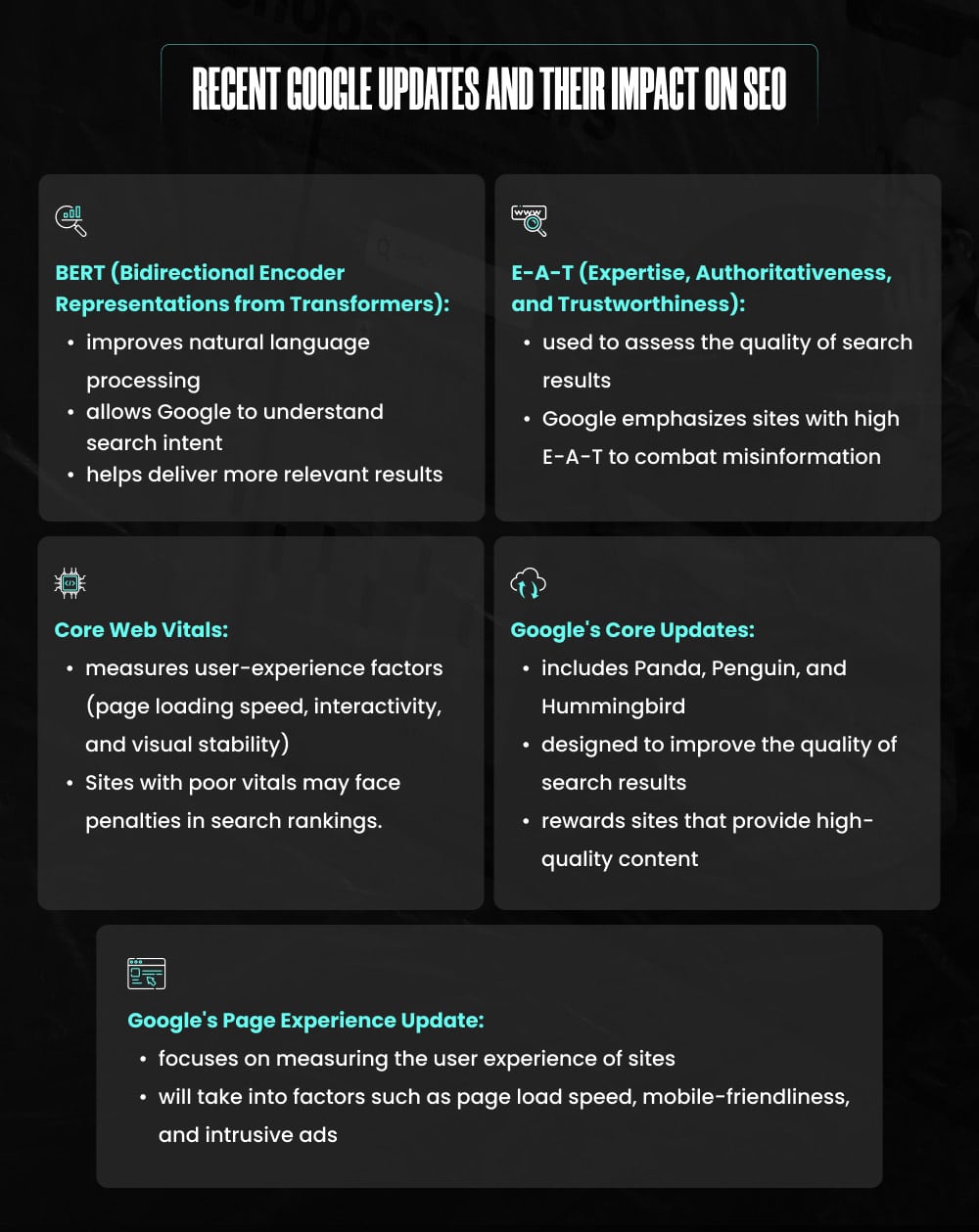
1.2 Key Factors That Search Engines Consider When Ranking Websites
Search engine algorithms are complex systems that constantly evolve to deliver users the most relevant and useful results. While the exact workings of these algorithms are often kept secret, there are several factors that search engines consider when ranking websites.
These factors include:
Relevance:
The content of a website should be relevant to the search query. This means using relevant keywords throughout the website, including the title, headings, and body text.
Authority:
The website should be authoritative on the topic of the search query. This means having high-quality content that is well-written and informative. It also means having backlinks from other high-quality websites.
Trustworthiness:
The website should be trustworthy. This means having a clear and concise privacy policy, a secure website, and a good reputation online.
1.3 Emerging Trends in SEO
As SEO continues to evolve, new trends are emerging that are shaping the future of SEO. To stay ahead of the competition and ensure your website is visible to your target audience, it’s crucial to understand these trends and incorporate them into your SEO strategy.
Voice Search and Its Implications
The rise of voice assistants like Siri, Alexa, and Google Assistant has led to a significant increase in voice search queries. This trend is expected to continue, as according to Statista, by 2024, over 50% of all online searches will be conducted through voice.
Make sure your SEO strategy covers the following voice search optimization tips to get your site in top voice searches: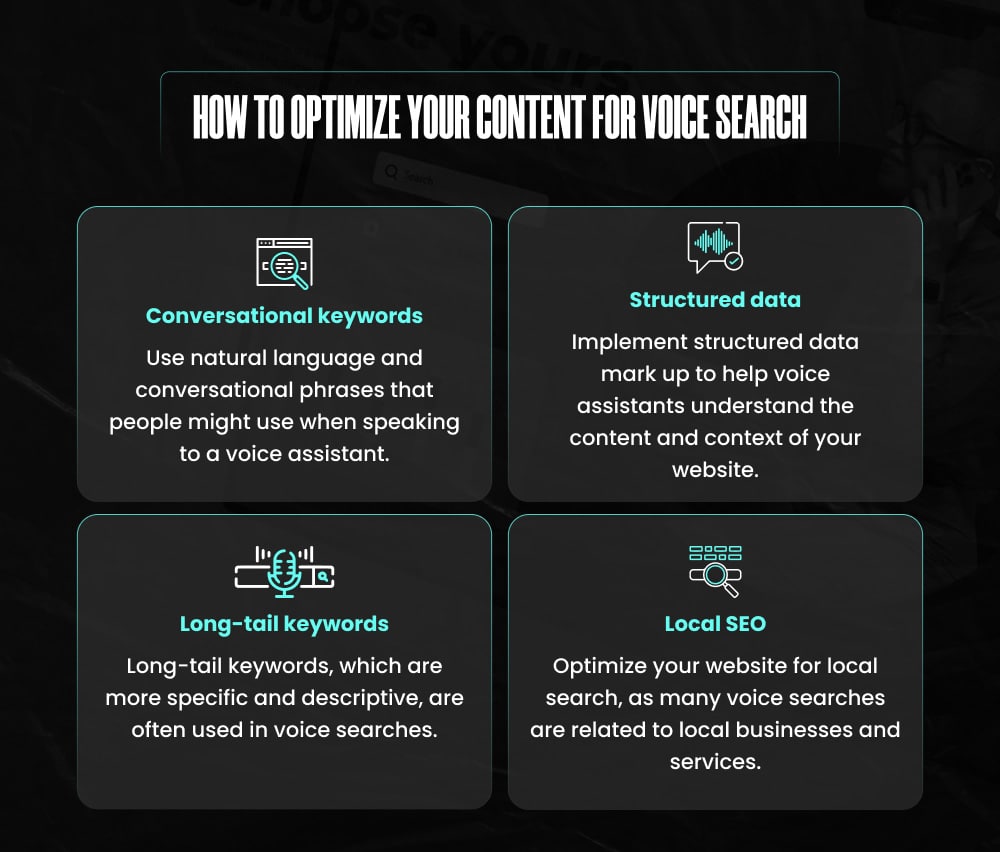
Mobile-First Indexing and Mobile SEO
With mobile devices now accounting for the majority of internet traffic, Google’s mobile-first indexing approach has become a significant factor that should be included in your SEO strategy. To ensure your website is optimized for mobile users, focus on: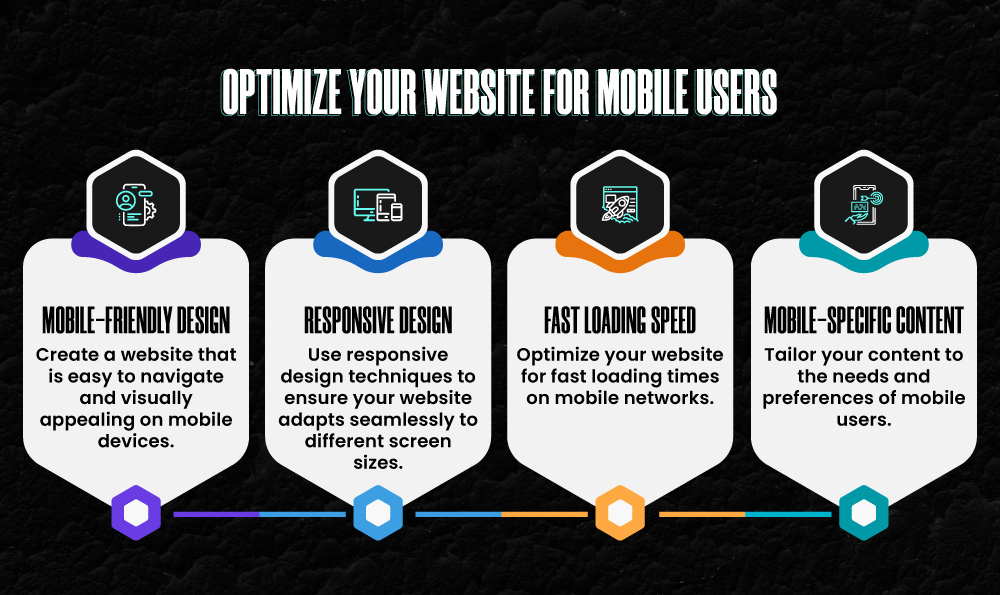
Artificial Intelligence in Search Algorithms
Search engines are increasingly incorporating artificial intelligence (AI) into their algorithms to better understand user intent and provide more relevant search results. To adopt this trend into your SEO strategy, consider the following:
- Content quality and relevance: Focus on creating high-quality, relevant content that aligns with user intent and search queries.
- User experience: Prioritize user experience by designing a website that is easy to use, engaging, and provides value to visitors.
- Topic authority: Establish your website as an authority on specific topics by creating in-depth, comprehensive content.
2. Setting Clear SEO Goals for 2024
2.1 Defining Clear Goals and Objectives
The first and most crucial step for creating a winning SEO strategy is to establish clear and well-defined goals that align with your overall business objectives. By understanding what you want to achieve through SEO, you can create a focused and effective SEO strategy that drives meaningful results.
Aligning SEO Goals with Broader Business Objectives
Your SEO strategy should not be treated as an isolated activity but rather as an integral part of your overall business strategy. Your SEO goals should directly contribute to your broader business objectives, such as:
- Increasing website traffic: Attracting more visitors to your website to expand your audience and reach potential customers.
- Generating leads: Converting website visitors into leads by capturing their contact information and nurturing their interest in your products or services.
- Boosting sales: Driving sales by increasing website conversions, encouraging online purchases, or generating inquiries from potential customers.
- Enhancing brand awareness: Building brand recognition and reputation by establishing your website as a trusted source of information in your industry.
2.2 Setting SMART Goals
To ensure your SEO strategy includes goals that are actionable and attainable, follow the SMART framework: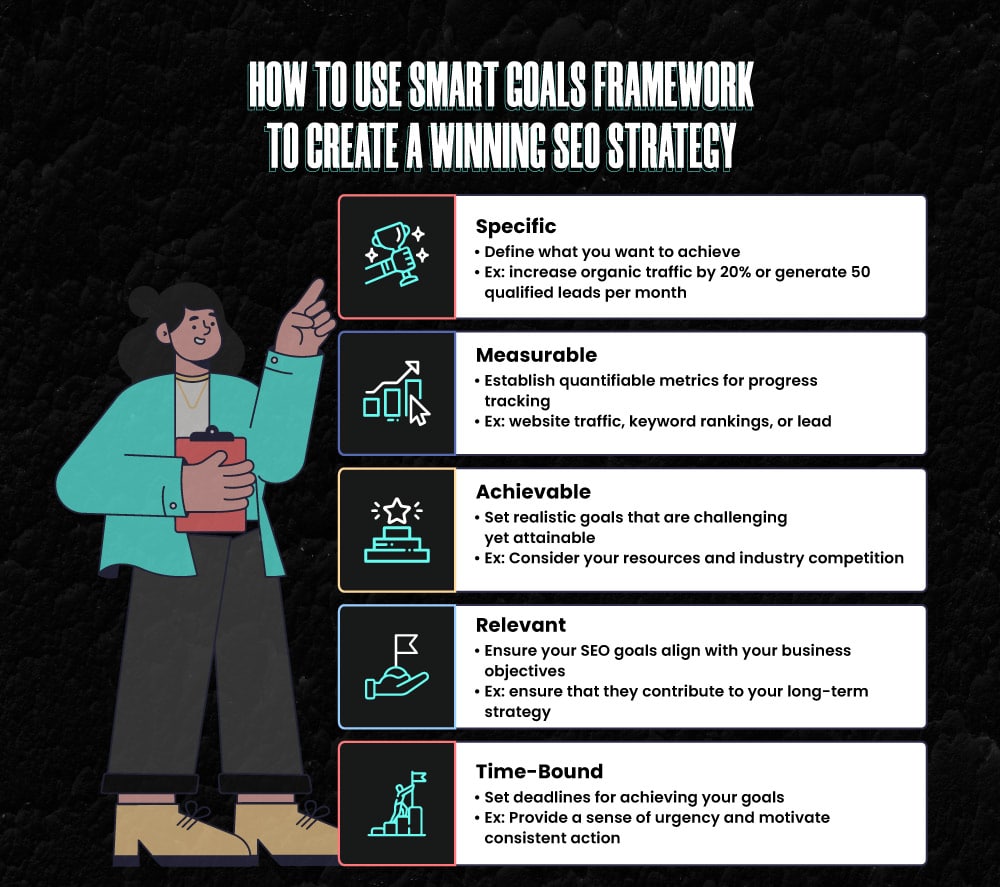
By establishing clear and SMART goals in your SEO strategy, you can create a roadmap for your SEO efforts to achieve the desired outcomes for your business.
2.3 Performance Metrics to Track
Once you’ve established clear SEO goals, it’s time to identify the key performance indicators (KPIs) that will measure your progress and determine the success of your SEO strategy.
Tracking these metrics provides valuable insights and allows you to make data-driven decisions to improve your SEO strategy.
Key Performance Indicators (KPIs) for SEO Success
Here are some essential KPIs to include in your SEO strategy:
- Organic traffic: The number of visitors who arrive at your website from search engine results pages (SERPs) without clicking on paid ads.
- Keyword rankings: The position of your website in SERPs for targeted keywords.
- Conversion rate: The percentage of website visitors who take a desired action, such as making a purchase, signing up for a newsletter, or downloading a resource.
- Cost per acquisition (CPA): The average cost of acquiring a new customer through SEO efforts.
- Return on investment (ROI): The measure of profit gained from an investment in SEO activities.
Tools for Monitoring and Analyzing Performance
These tools can analyze your SEO performance and provide valuable data and insights that can help you identify areas for improvement and optimize your SEO strategy.
Some popular SEO monitoring tools include:
Regular monitoring and analysis are essential for achieving your SEO goals and ensuring the continued success of your SEO strategy.
3. Conducting Comprehensive Keyword Research
3.1 The Role and Importance of Keywords in Modern SEO
While the fundamental concept of keywords remains essential, the way we approach keyword research and implementation has evolved. In modern SEO, it’s not just about stuffing keywords into your content but rather understanding user intent and using keywords strategically to align with user search behavior.
So, before you commit the mistake of adding the old-age method of listing exact match keywords in your 2024 SEO strategy, consider the following:
3.2 Semantic Search is The New Black
Search engines now prioritize semantic search, which focuses on the meaning and context of search queries rather than just matching exact keywords. This means that your content should be relevant to the overall topic and intent of a search query, even if it doesn’t include the exact keywords used by the user.
3.3 User Intent Reigns Supreme Over ‘Exact-match’ Keywords
Search engines have become increasingly sophisticated in understanding the intent behind user queries. This means that simply matching keywords to content is no longer enough. To effectively target keywords, you need to understand the context and purpose behind the search terms users are entering.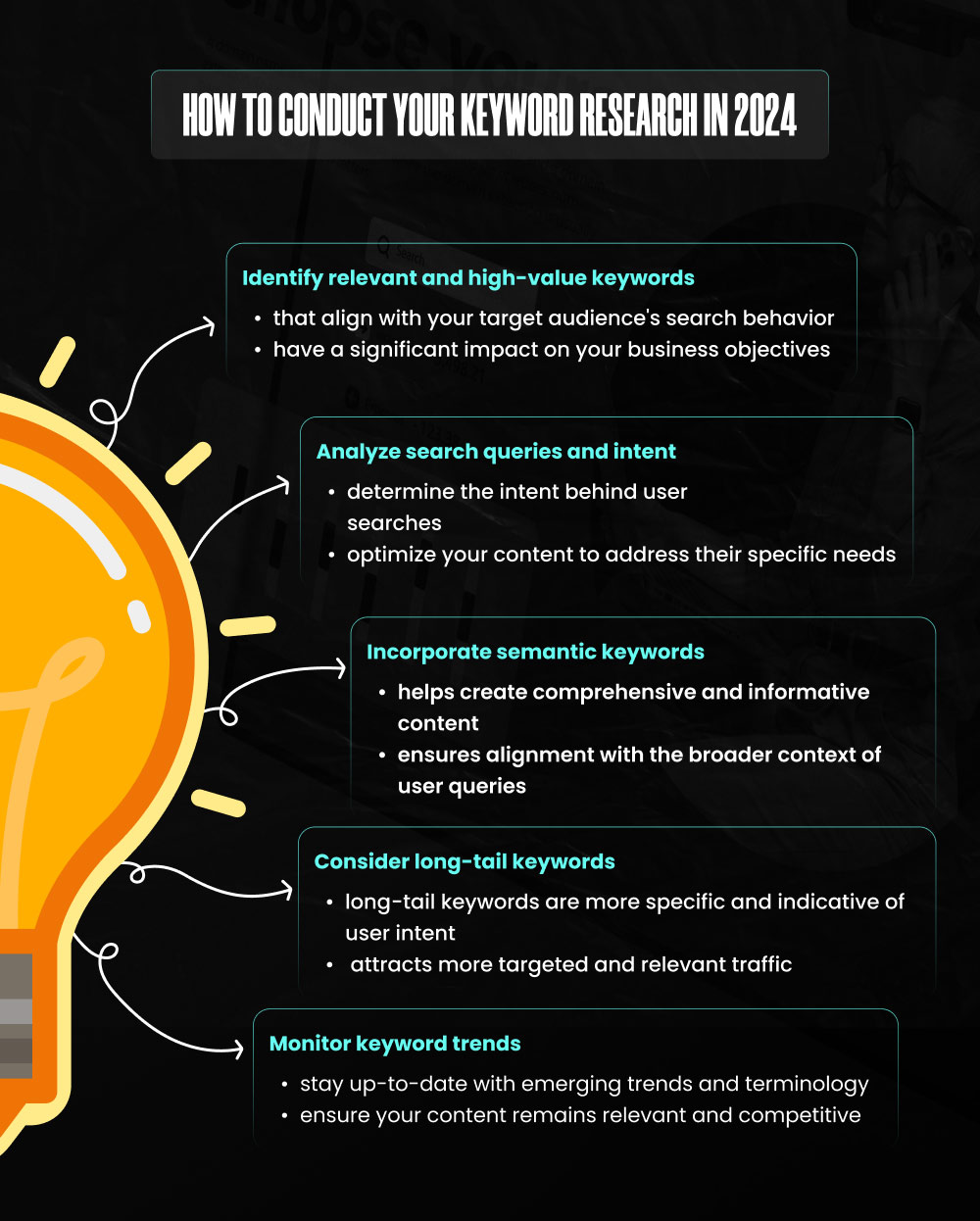
3.4 Strategies for Identifying High-Potential Keywords
When conducting keyword research, it’s crucial to identify keywords that are not only relevant to your target audience but also have the potential to drive valuable traffic and conversions to your website. Here are some strategies for identifying high-potential keywords:
When conducting keyword research, focus on identifying keywords that are:
- Relevant to your target audience and the content on your website.
- Have a sufficient search volume to attract visitors.
Have a reasonable level of competition, meaning you have a chance of ranking well for those keywords.
3.5 Tools for Keyword Research
There are numerous tools that help you identify relevant keywords, providing valuable insights into keyword popularity, search volume, and competition. Which ultimately helps you in developing a targeted content strategy.
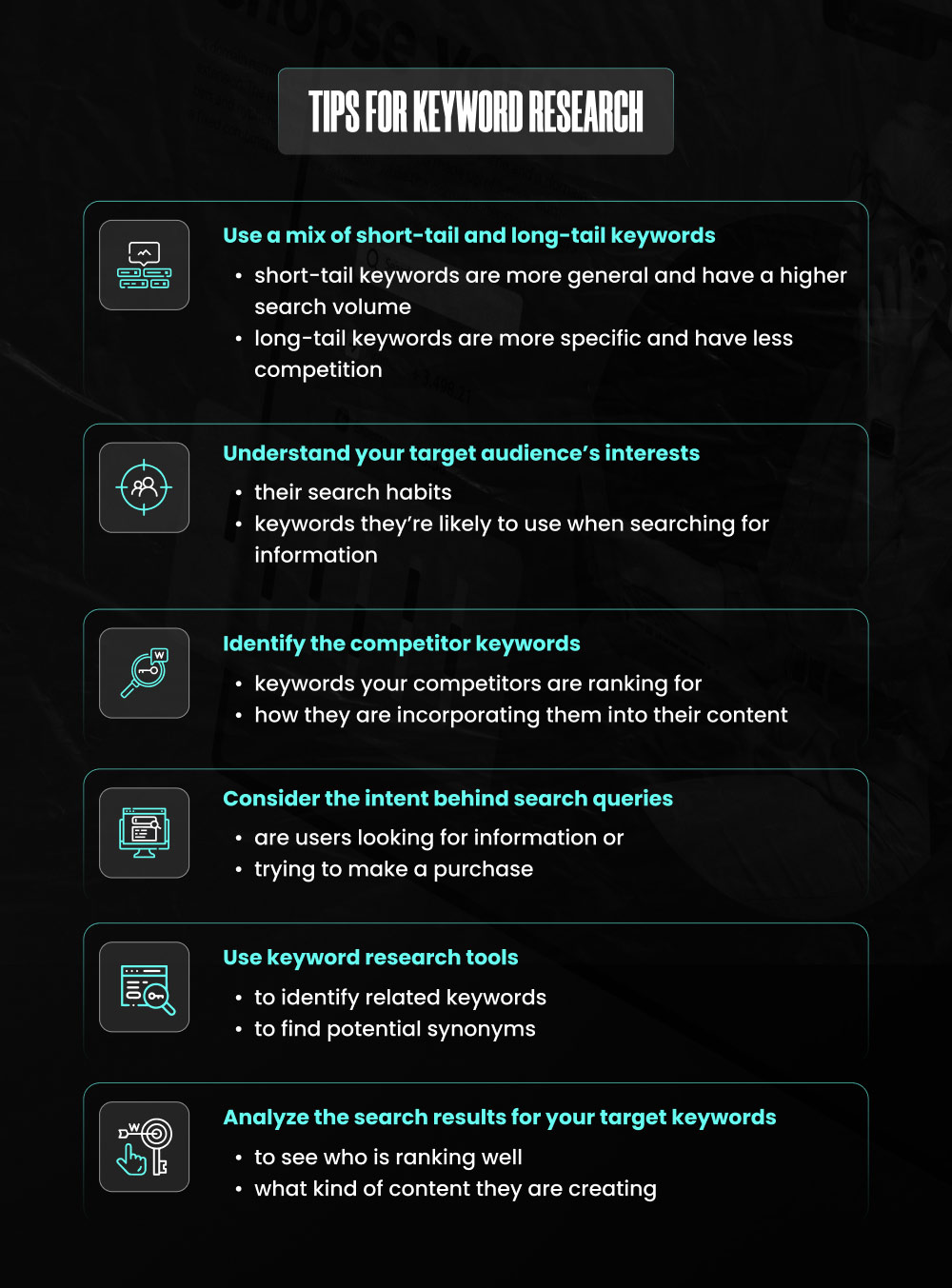
4. On-Page SEO Best Practices to Include in Your SEO Strategy
On-page SEO refers to the optimization of your website’s content and structure to improve its ranking in search engine results pages (SERPs).
4.1 Crafting Engaging and SEO-Friendly Content
Effective on-page SEO involves creating high-quality content that is both informative and engaging for users while also incorporating relevant keywords and signals that search engines can understand.
Here are the key factors to consider when optimizing website content:
- Ensure that your content is relevant to the search terms users are employing.
- Create original and informative content that stands out from your competitors.
- Provide in-depth coverage of the topic, addressing all aspects of the user’s search intent.
- Use clear language, proper grammar, and a consistent structure to make your content easy to read.
- Use keywords naturally and contextually, ensuring they align with the content’s overall theme and purpose.
- Incorporate multimedia elements, such as images, videos, and infographics, to enhance engagement and break up text-heavy content.
4.2 Importance of Multimedia Elements
Multimedia elements play a significant role in enhancing user engagement, making your content more visually appealing and informative. They can also improve your website’s overall appeal and user experience, which can indirectly impact search rankings.
So, don’t forget to integrate them into your 2024 SEO strategy.
Types Of Multimedia Elements To Consider
Images:
Use high-quality, relevant images that complement your content and enhance visual appeal. Optimize images with proper alt text and file names.
Videos:
Incorporate videos to break up text, provide engaging explanations, and demonstrate concepts or processes. Optimize videos with transcripts and meta descriptions.
Infographics:
Use infographics to visually represent complex data, summarize key points, and make information more digestible. Optimize infographics with alt text and contextually relevant keywords.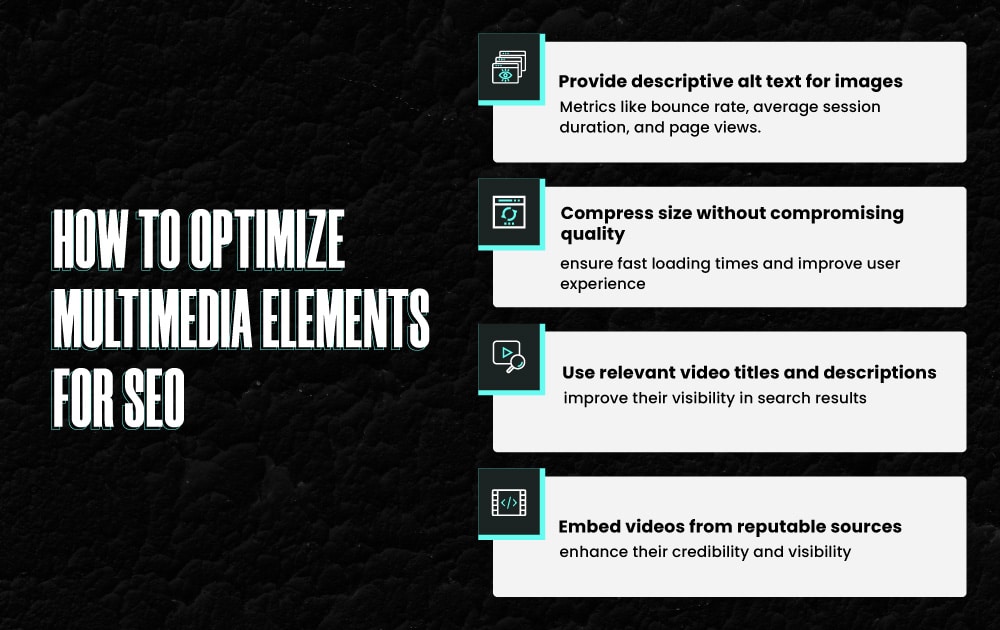
4.3 Follow Keyword Best Practices
- Use primary keywords in your title tags, meta descriptions, and throughout the content.
- Utilize secondary keywords and long-tail keywords to enrich your content and target specific variations in search queries.
- Maintain a natural keyword density, avoiding excessive repetition that appears unnatural or spammy.
- Ensure keywords are placed strategically, such as in headings, subheadings, and the first paragraph.
- Break down long-form content into clear sections using headings (H1, H2, H3) to organize information and improve readability.
- Use bullet points, numbered lists, and other formatting to enhance visual appeal and make content easier to scan.
- Ensure your website and content are optimized for mobile devices. This includes using responsive design, fast loading times, and mobile-friendly formatting.
- Regularly update your content with fresh information, new perspectives, or additional resources to maintain relevance and keep your audience engaged.
4.4 Technical SEO Considerations
Technical SEO exists to ensure that your website is crawlable, indexable, and user-friendly. This includes aspects such as site structure, URL optimization, page speed, and mobile optimization. Effective technical SEO ensures that search engines can easily understand and access your website, contributing to improved search rankings and visibility.
Site Structure and URL Optimization
A clear and well-structured website hierarchy makes it easier for search engines to crawl and index your content. Make sure your On-Page SEO strategy includes the following:
- Organize your website content into logical categories and subcategories. Use a consistent navigation structure to guide users and search engines.
- Use descriptive and keyword-relevant URLs that reflect the content of each page. However, avoid keyword stuffing.
- Use short and easily understandable URLs that are easy for users to remember and type.
- Use lowercase letters in URLs for consistency and accessibility.
- Create a network of internal links to connect related pages within your website. This helps search engines understand the relevance and context of your content.
- Implement breadcrumbs to provide users and search engines with a visual indicator of their location within the website’s hierarchy.
Page Speed and Mobile Optimization
Page speed and mobile optimization have become increasingly important when it comes to creating a robust SEO strategy as users increasingly access websites from mobile devices.
Mobile Optimization
- Implement a responsive design that adapts your website’s layout and elements to different screen sizes and devices.
- Use mobile testing tools to ensure your website provides a smooth and user-friendly experience on mobile devices.
- Follow Google’s mobile-first indexing guidelines to ensure your website is optimized for mobile search.
Page Speed Optimization
- Reduce the number of HTTP requests by optimizing images, minimizing code, and combining files.
- Enable browser caching to store static resources like images and CSS files locally for faster loading times.
- Compress images without compromising quality to reduce page load times.
- Employ a CDN (content delivery network) to distribute your website’s content across multiple servers, improving loading times for users worldwide.
Additional Technical Considerations
- Use robots.txt to instruct search engines which pages they should crawl and index.
- Implement canonical URLs to indicate the preferred version of a page when multiple versions exist.
- Use HTTPS protocol to secure your website and enhance its credibility in the eyes of search engines and users.
5. Off-Page SEO Strategies to Include in Your SEO Strategy
Off-page SEO refers to the optimization techniques performed outside of your website to improve its ranking in search engine results pages (SERPs). One of the most significant off-page SEO factors is building high-quality backlinks.
5.1 Importance of Building High-Quality Backlinks
Backlinks are essentially links from other websites to your website, and they serve as signals to search engines that your website is credible, authoritative, and valuable.
Also read: 7 Link-Building Strategies for Improving Off-Page SEO
In 2024, backlinks continue to play a significant role in SEO strategy: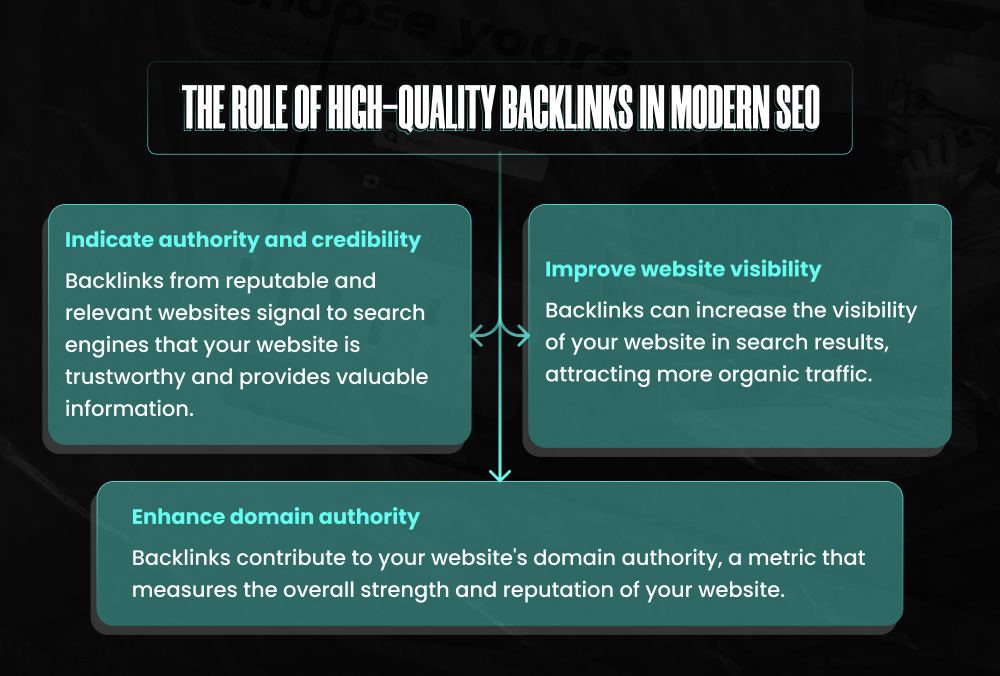
5.2 Strategies for Earning Authoritative and Relevant Backlinks
Building a backlink profile with high-quality, relevant backlinks requires a strategic and consistent approach. Here are some effective strategies to earn authoritative and relevant backlinks that should be included in your SEO strategy:
- Create high-quality content: Produce informative, engaging, and shareable content that other websites will want to link to.
- Guest blogging: Contribute guest posts to reputable websites in your industry or niche. This provides exposure to a new audience and opportunities for backlinks.
- Broken link building: Identify broken links on relevant websites and offer your content as a replacement.
- Social media engagement: Actively engage on social media platforms, building relationships with influencers and potential link partners.
- HARO (Help a Reporter Out): Sign up for HARO and respond to queries from journalists who are looking for expert sources. This can lead to backlinks and increased brand visibility.
- Earn media mentions: Actively seek opportunities to earn mentions in news articles, blog posts, and other online publications.
- Directory submissions: Submit your website to relevant and high-quality directories in your industry. This can provide valuable backlinks and increase your website’s visibility.
- Community engagement: Participate in online forums, communities, and discussions related to your industry or niche. Provide valuable insights and expertise, which can lead to backlinks.
Remember, building backlinks is a gradual process that requires patience and persistence. Focus on creating high-quality content and engaging with your audience, and the backlinks will come naturally.
Also read: 7 Do’s and Don’ts of Backlink Building: Tips for Avoiding Penalties
5.3 The Role of Social Media in SEO Strategy
While social media doesn’t directly impact SEO rankings, it plays a significant role in boosting brand awareness, driving traffic to your website, and enhancing your overall online presence and website’s position in search engine result pages (SERP).
Leveraging Social Signals for Improved Search Rankings
Social media engagement generates valuable social signals that search engines consider when evaluating a website’s authority and relevance.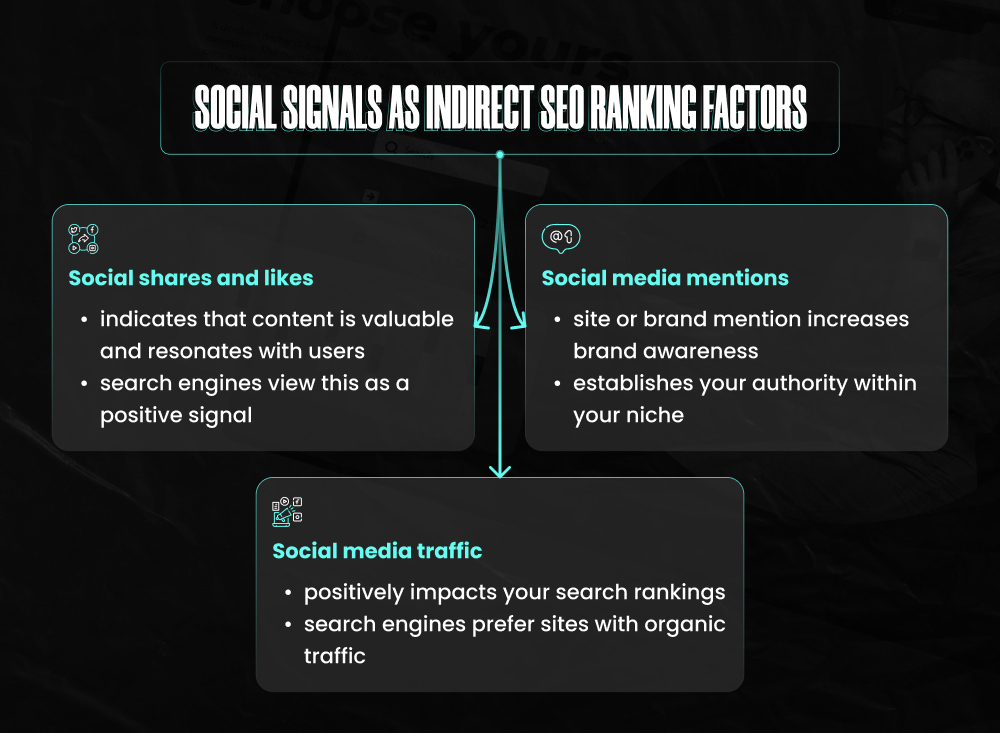
Integrating Social Media into the Overall SEO Strategy
To effectively leverage social media in your SEO strategy, it’s crucial to integrate social media activities into your overall SEO strategy.
Here are some strategies for combining both in your SEO strategy:
- Promote your social media profiles on your website
- Share your content on social media
- Use relevant and targeted hashtags
- Optimize social media profiles with relevant keywords
- Engage with your audience via comments, Q&A and discussions
- Use social media scheduling tools
6. Local SEO Tactics for Your 2024 SEO Strategy
With the increasing reliance on mobile devices and the prevalence of near-me searches, local SEO has become increasingly important for businesses that serve a specific geographic area.
To put it simply, Local SEO is the process of optimizing your online presence to improve your visibility and ranking in local search results.
6.1 The Significance and Impact of Local SEO on Businesses
Local search plays a significant role in consumer behavior. Studies have shown that:
- 72% of consumers who perform a local search visit a store within 5 miles of their current location.
- 46% of all Google searches are local.
- 88% of mobile local searches result in a purchase within 24 hours.
Effective local SEO can help businesses attract more local customers, increase foot traffic, and boost sales.
6.2 Local Link Building and Citations
In addition to optimizing your Google Business Profile, local link building and citations play a crucial role in ensuring the success of your local SEO strategy.
Local link building refers to acquiring backlinks from reputable websites in your local area, while citations are mentions of your business name, address, and phone number (NAP) across the web.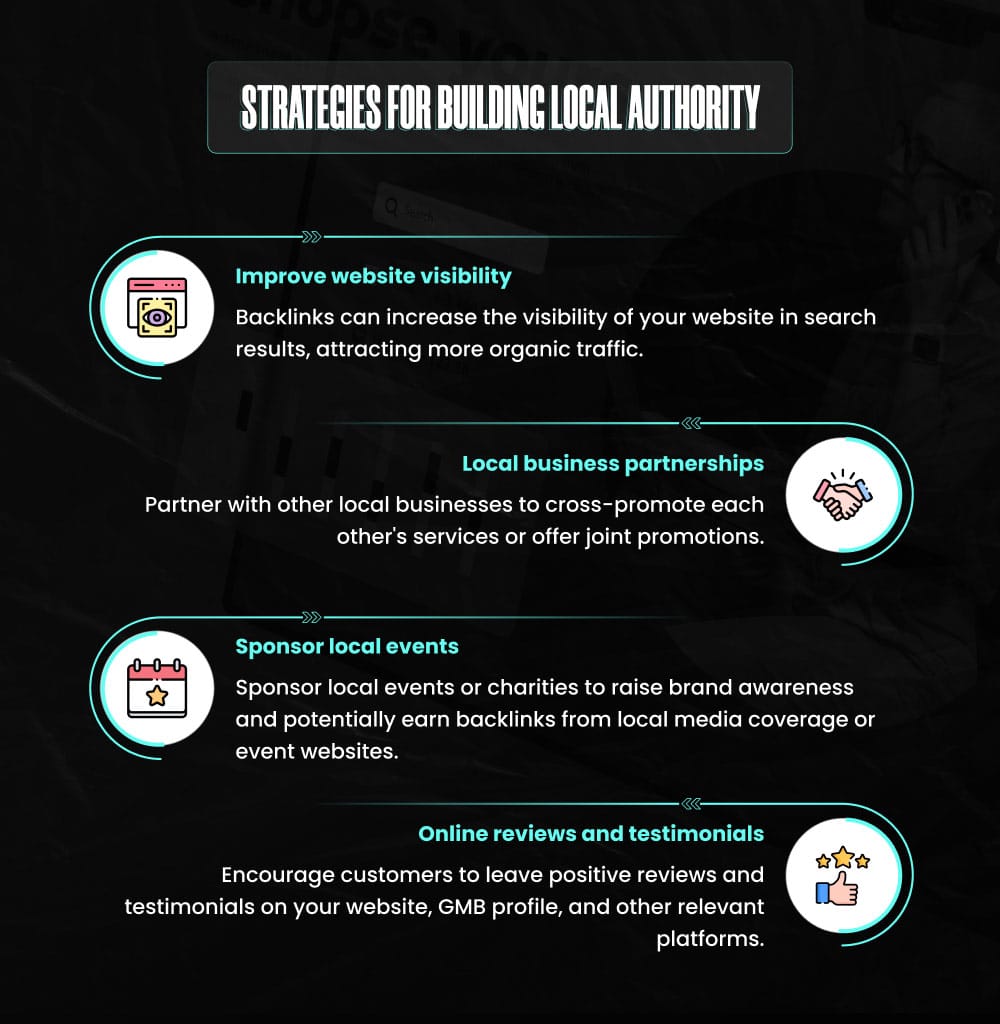
6.3 Make Sure To Have an Up and Running Google Business Profile
Google Business Profile allows businesses to manage their online presence in Google Search and Maps. Optimizing your GMB profile is crucial for the success of your local SEO strategy. Here’s how to do it:
- Complete and accurate information: Ensure your GMB profile is complete and accurate, including your business name, address, phone number (NAP), website, business hours, and services offered.
- Regular updates: Keep your GMB profile up-to-date with any changes to your business information, such as new services, promotions, or special events.
- High-quality photos: Add high-quality photos of your business, including your storefront, products, and team.
- Customer reviews: Encourage customers to leave positive reviews on your GMB profile. Positive reviews enhance your credibility and boost your ranking.
- Location accuracy: Ensure your business location is accurately marked on Google Maps.
Also read: Google My Business: Why and How to Optimize Your Google Business Profile
7. The Role of Technical SEO in Your SEO Strategy
7.1 Using Schema Markup for Enhanced Search Results
Schema markup, also known as structured data, is a way of organizing and highlighting information about your website’s content for search engines.
When search engines can accurately understand your content, they can display more informative and engaging search results, which can lead to increased user engagement and traffic to your website.
For example, schema markup can provide search engines with information about:
- Product details: Name, price, description, availability, and reviews
- Event information: Date, time, location, description, and organizer
- Recipe ingredients: Ingredients, instructions, and cooking time
- Article information: Author, publication date, and article type
Also read: Schema Markup and Its Many SEO Benefits
When implementing schema markup, it’s essential to follow best practices to ensure that your markup is accurate, consistent, and properly validated. Here are some key guidelines: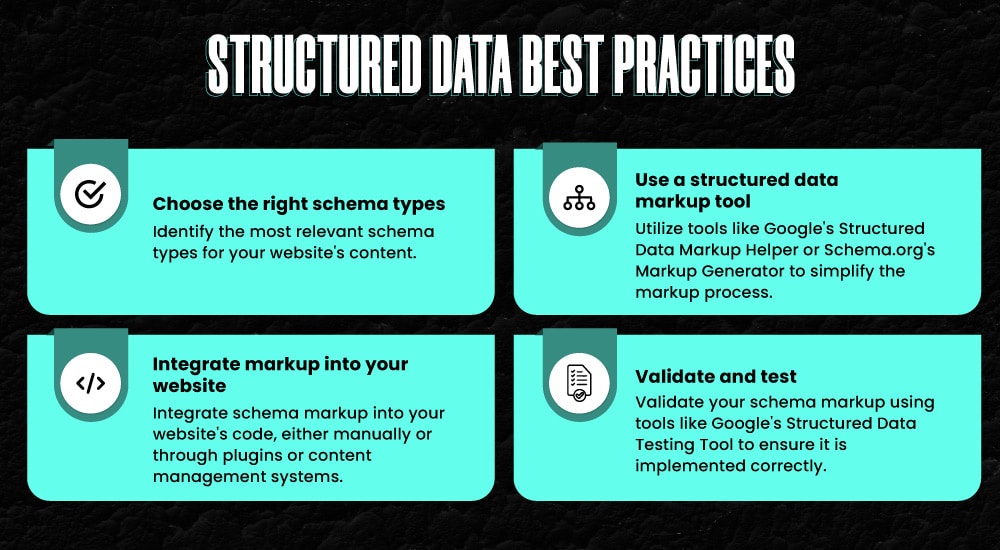
7.2 Core Web Vitals and User Experience
Understanding Core Web Vitals
As stated in the beginning, Core Web Vitals are a set of metrics that Google uses to measure the user experience of a website. These metrics reflect how quickly a page loads, how interactive it is, and how visually stable it is.
Google considers Core Web Vitals to be important ranking factors, and optimizing your website for these metrics can help improve your SEO performance. Hence the reason why they should be a part of your SEO strategy without fail.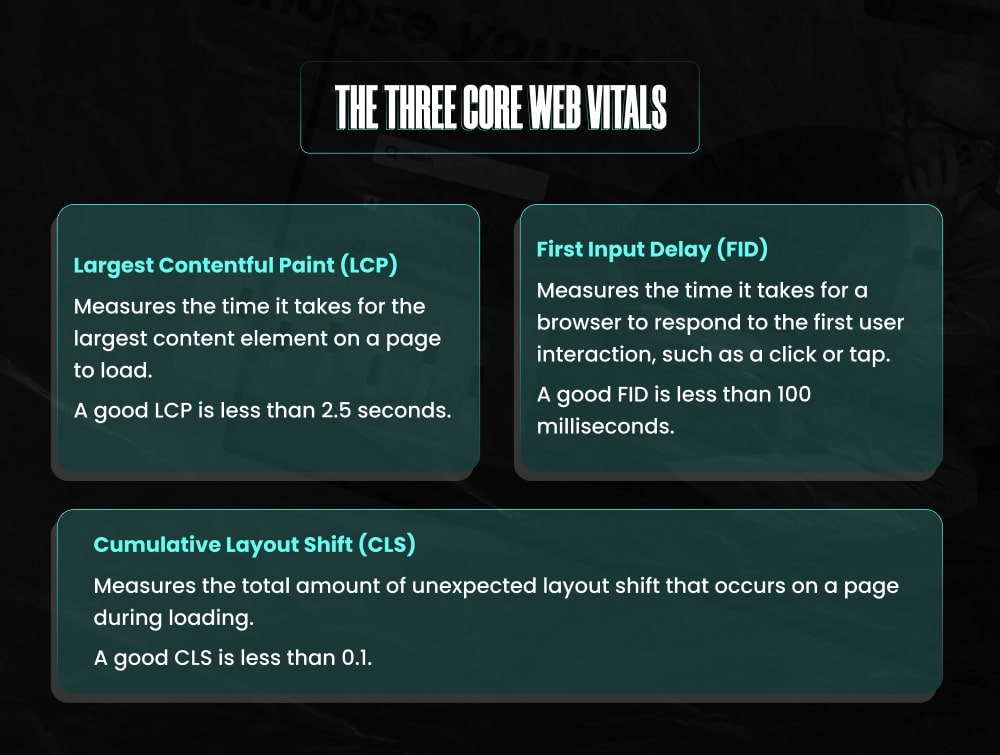
Enhancing User Experience for SEO Benefits
Here are some strategies for enhancing user experience and improving Core Web Vitals:
- Optimize image sizes: Large images can slow down page loading times. Optimize image sizes without compromising quality to improve LCP.
- Use a content delivery network (CDN): A CDN can help deliver your website’s content to users around the world more quickly.
- Minimize JavaScript: Excessive JavaScript can cause delays in page rendering and interactivity. Optimize JavaScript usage and minimize third-party scripts to improve FID.
- Use CSS for layout and positioning: Avoid using layout and positioning with JavaScript, which can lead to unexpected layout shifts and impact CLS.
- Optimize font loading: Slow font loading can delay page rendering. Use font optimization techniques, such as font subsetting and web fonts, to ensure fonts load quickly.
- Utilize browser caching: Leverage browser caching to store static resources, such as images and JavaScript files, locally on the user’s device. This reduces the need to download these resources on each page load, improving loading times.
- Monitor Core Web Vitals: Use tools like Google PageSpeed Insights or WebPageTest to monitor your website’s Core Web Vitals performance and identify areas for improvement.
- Minify code: Minifying code can reduce the size of your website’s code, which can improve page load time.
- Use lazy loading: Lazy loading only loads images and other content as users scroll down the page, which can improve page load time for users who don’t need to see all of the content on the page.
- Use a responsive design: A responsive design ensures that your website looks and works well on all devices, including desktops, tablets, and smartphones.
8. The Integration of Content Marketing in SEO Strategy
Content marketing is an integral part of a successful SEO strategy. Therefore, by creating high-quality, informative, and engaging content that aligns with user intent, you can attract visitors to your website, establish your brand as a thought leader, and ultimately improve your website’s ranking in search engine results pages (SERPs).
Also read: Navigating Google’s SERP Features: How to Stand Out in a Crowded Landscape
8.1 Creating SEO-Driven Content
Align Content with User Intent
By understanding user intent, you can create content that directly addresses their needs and expectations. This, in addition, will increase the likelihood of them engaging with your content and staying on your website longer.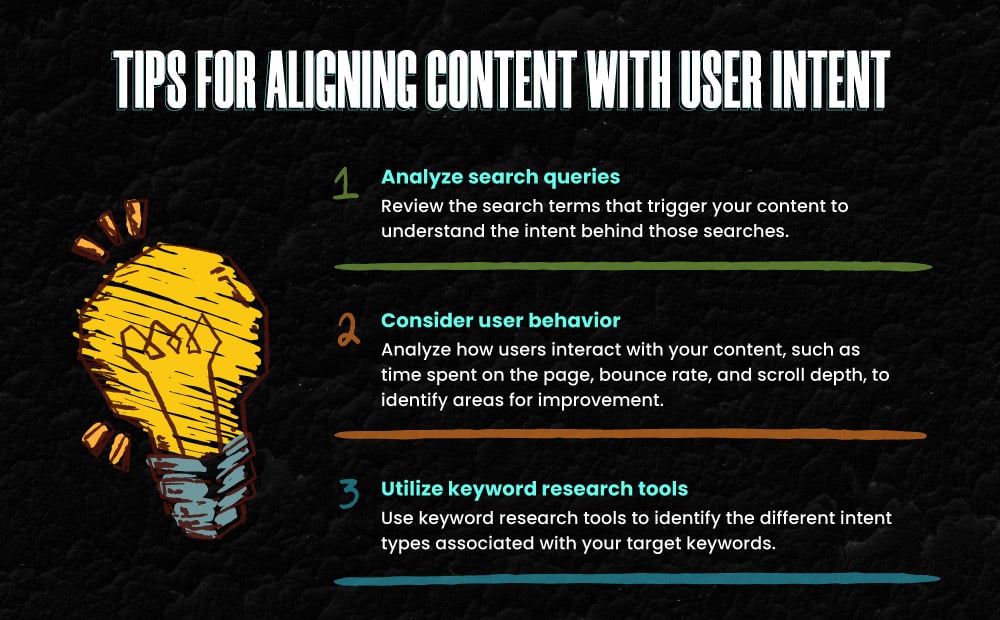
8.2 Strategies for Creating Shareable and Link-worthy Content
Creating content that is both shareable and link-worthy is essential for amplifying your content’s reach and attracting backlinks. As we have also discussed in detail in the above sections, here’s the listicle for reference:
- Offer fresh perspectives, expert opinions, and actionable advice that resonates
- Write in a clear, concise, and engaging style
- Use storytelling techniques, data visualizations, and multimedia elements
- Include social sharing buttons
- Use clear headings, subheadings, and bullet points
- Promote your content on social media, online communities, and email newsletters
Additional Tips
- Content freshness: Regularly produce new and updated content to keep your website fresh and attract ongoing organic traffic.
- Content repurposing: Repurpose existing content into different formats, such as infographics, videos, or social media posts, to reach a wider audience.
8.3 Video and Visual Content SEO
By incorporating optimized videos and visuals into your content and SEO strategy, you can enhance your website’s visibility, attract a wider audience, and improve your overall SEO performance.
Optimizing Videos and Visual Elements for Search
To ensure your videos and visual elements are discoverable and contribute to the success of your SEO strategy, it’s essential to optimize them for search engines.
Here are some key optimization strategies:
- Use clear and descriptive filenames that accurately reflect the content
- Provide informative alt text and image descriptions
- Add captions and transcripts for your videos
- Add schema markup to provide search engines with detailed info about your content.
- Include relevant keywords in your video titles, descriptions, and tags
Also read: Power Of Visual Content Marketing: The Visual Revolution
9. Monitoring, Analysis, and Adaptation
9.1 Implementing SEO Analytics Tools
An effective SEO strategy is incomplete without consistent monitoring, analysis, and adaptation. Therefore, by utilizing SEO analytics tools, you can track your website’s performance, identify areas for improvement, and make data-driven decisions to optimize your SEO strategy.
Google Analytics and Google Search Console are two essential tools for SEO analysis. Google Analytics provides insights into website traffic, user behavior, and conversion rates, whereas on the other hand, Google Search Console offers valuable information about website visibility, search rankings, and technical SEO issues.
9.2 Customized Reports and Dashboards
To effectively analyze your SEO data, create customized reports and dashboards that focus on key metrics relevant to your business goals. These reports should provide insights into:
- Website traffic and user behavior: Track website traffic trends, top-performing pages, user engagement metrics, and conversion rates.
- Search engine rankings: Monitor your website’s ranking for targeted keywords, identify ranking fluctuations, and analyze competitor rankings.
- Backlink profile and link acquisition: Track the growth of your backlink profile, identify high-quality backlinks, and assess link acquisition strategies.
- Technical SEO issues: Monitor technical SEO performance, identify and address technical issues, and ensure your website is optimized for search engines.
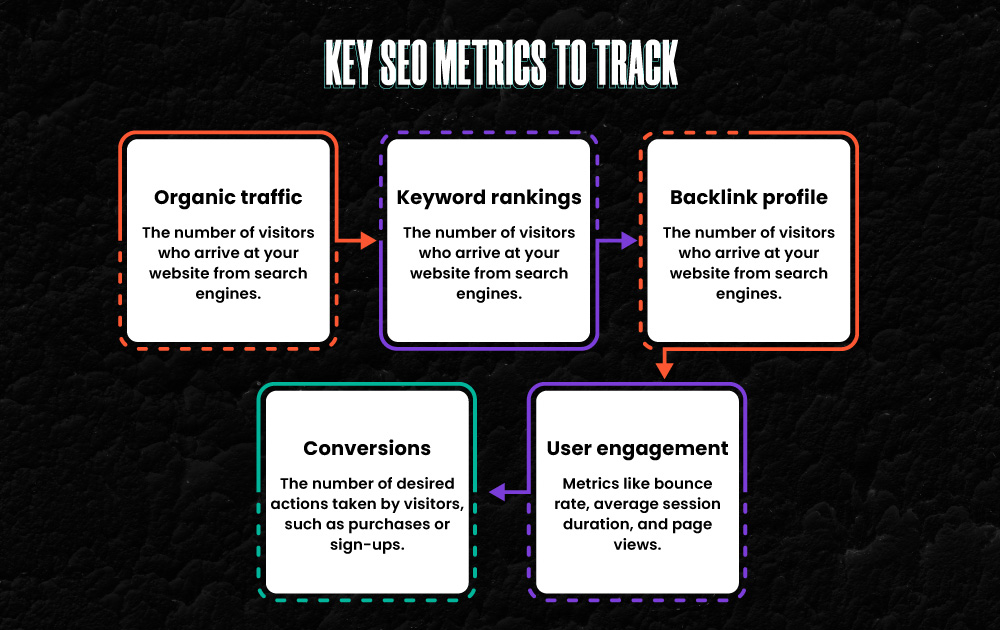
Therefore, by regularly monitoring and analyzing these metrics, you can gain a comprehensive understanding of your website’s SEO performance, identify areas for improvement, and make informed decisions to optimize your SEO strategy for long-term success.
Staying Abreast of The Ever-Evolving SEO Landscape
To keep up with the ever-changing world of Search Engine Optimization, include the following practices in your SEO strategy:
Subscribe to SEO news and industry blogs:
Stay informed about the latest algorithm updates, industry trends, and best practices by subscribing to reputable SEO news sources and industry blogs.
Follow search engine announcement channels:
Monitor the official announcement channels of major search engines, such as Google’s Search Engine Optimization Help Center and Bing’s Webmaster Center, for official updates and guidelines.
Engage in SEO communities:
Participate in online SEO communities and forums to discuss algorithm updates, share insights, and learn from other SEO professionals.
Conclusion
As the digital landscape continues to evolve at a rapid pace, SEO remains an essential tool for businesses to reach their target audience and achieve their online goals.
Therefore, by implementing the strategies outlined in this blog, you can create a successful SEO strategy that drives organic traffic, enhances brand visibility, and boosts your business growth.
Remember, SEO is not a one-time effort but an ongoing process that requires continuous adaptation and improvement. Therefore, stay abreast of search engine algorithm updates, analyze your website’s performance, and embrace data-driven decision-making to ensure your SEO strategy remains effective and aligned with the ever-changing environment.
With a commitment to continuous learning, innovation, and data-driven optimization, you can successfully navigate the complexities of SEO and ultimately achieve lasting success in the digital world.
Also read: From Keywords to Ranking: Your Most Common SEO FAQs Answered
Until next time.


I appreciate how you’ve simplified some of the more advanced SEO concepts.
This is a perfect resource for both beginners
and seasoned pros.
The level of detail in this post is commendable. You have a great way of making things interesting while still keeping them informative. Keep it up!
Your passion for the subject shines through in every paragraph. It’s refreshing to find content that’s both educational and enjoyable to read.
Clear and concise with useful tips, offering straightforward advice that readers can easily follow and benefit from.
Engaging and informative, capturing reader interest with interesting content and providing valuable knowledge.
I can’t get enough of your insightful articles and engaging stories. Thank you for sharing your passion with the world!
I really appreciate the effort you put into making your content so valuable. This was an excellent read, and I’ve taken away some great points!
This is such an important and often overlooked topic Thank you for bringing attention to it and offering valuable advice
Thanks for the marvelous posting! I quite enjoyed reading it,
you will be a great author.I will be sure to bookmark your blog and definitely will come back sometime soon. I want to encourage one to
continue your great writing, have a nice morning!
I like the helpful information you provide in your articles.
I will bookmark your weblog and check again here regularly.
I am quite sure I will learn plenty of new stuff right here!
Good luck for the next!
Their posts always leave us feeling informed and entertained. We’re big fans of their style and creativity.
The photographs and visuals used in this blog are always stunning They really add a beautiful touch to the posts
Keep up the fantastic work and continue to inspire us all!